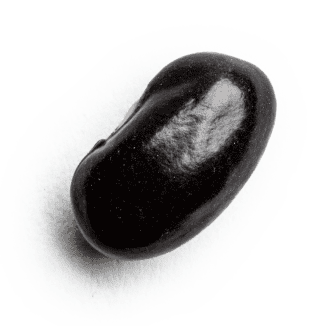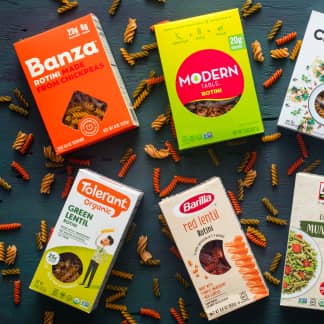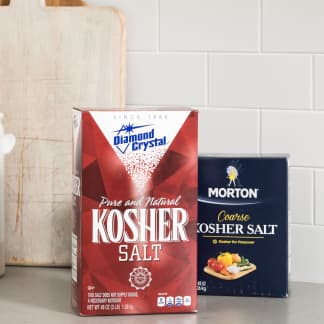There are more than 30,000 varieties of beans in the world, but only a handful are cultivated on an industrial scale. The rest—the ones that the world’s big producers of canned and dried beans forgot—are known as heirloom beans. You may have encountered heirloom beans at a garden store, small market, or local restaurant. Their devotees include famous chefs and trailblazers of the food scene, dedicated local farmers, and biodiversity activists—not to mention millions of home cooks around the world. What makes them so special? How do they differ from the other beans you can buy at the supermarket? Perhaps most important, are they worth their slightly higher price? We dug deep, cooking and tasting dozens of pounds of beans and interviewing bean researchers, food historians, and heirloom bean suppliers, to answer these questions and more.
To understand heirloom beans, it’s important to first discuss beans in general.
What Does “Bean” Mean?
Simply put: Beans are seeds. “Bean'' is an umbrella term used to describe the seeds of thousands of flowering plants within the legume family, Fabaceae. “Beans” are a big category; the term even applies to varieties that aren’t really considered beans, such as lentils, peanuts, and certain types of peas. Still, when we think of beans, we're usually thinking of varieties of Phaseolus vulgaris, the "common bean," including black beans, pinto beans, navy beans, and even green beans. Most heirloom beans on the market are also varieties of common beans.

Fabaceae, the legume family, contains thousands of flowering plants, many of whose fruits and seeds we know as beans. There are several genera within the legume family, including Vicia (broad beans), Pisum (peas), Lens (lentils), and Phaseolus, which contains Phaseolus vulgaris, the common bean. Most heirloom beans on the market are common beans.
The Story Behind Supermarket Beans
Most of the beans on the market are so-called “commodity” beans, which are grown using commercial farming techniques on an industrial scale. In the past 200 years, bean breeders identified certain varieties of common beans that were easier to grow, transport, process, and sell than others. These beans make up the monoculture you can purchase at your local supermarket: bag after bag and can after can of identical beans of only a few different varieties. They are low-cost and consistently available and can be delicious. The downside: Most consumers are missing out on other unique varieties.
New World Beans in the Old World
Common beans—Phaseolus vulgaris—are also referred to as “New World'' beans because they were domesticated in North and South America. These beans only made their way to Europe as part of the Columbian Exchange beginning in the late 15th century. This means that many of the so-called European beans we love—including cannellini and borlotti beans—aren’t originally from Europe. Several cherished bean-centric recipes from Europe—including pasta e fagioli and cassoulet—were originally made with Old World varieties such as fava beans and chickpeas and didn’t exist in their modern forms until New World beans became widely available.
What Makes a Bean an “Heirloom”?
When the commodity bean industry zeroed in on a handful of beans and ignored the rest, a few things happened. Most beans were lost to history, but the luckier ones were passed down for generations, preserved by avid small-scale farmers and dogged seed collectors for their unique appearances or flavors. Heirloom bean farming has been small-scale by definition, kept strong by networks of family farms growing the same beans for generations and selling them locally. These beans have adapted to the specific regions where they’ve been traditionally cultivated and are often vulnerable to diseases and pests when grown in other environments. This makes them poor candidates for farming and distribution on a commercial level.


Bean plants are flowering plants. After planting, they grow and sprout flowers (most of which are edible), and then they bear fruit. The fruit are the bean pods we recognize as green beans or pole beans. They can be eaten whole or left to develop further and grow seeds. These seeds mature and dry in their pods, often sporting vibrant colors and patterns when they're ready for harvest.
In the past two decades, there has been a wider spotlight shone on heirloom beans in the United States, with the advent of a few companies dedicated to preserving and cultivating these lesser-known varieties and selling them to home cooks. One of the most famous of these companies is Rancho Gordo in Napa, California, which partners mostly with farmers on the West Coast and in Mexico. But it’s not the only company in the game. Zürsun Idaho Heirloom Beans has been selling heirloom beans grown by family farms in Idaho’s Snake River Valley since 1985. North Bay Trading Company provides beans and other heirloom foods from the Great Lakes region. Heirloom beans from these purveyors and more—including your own local farmers—can be purchased online, at specialty food stores, or at farmers’ markets.
The Bean Life Cycle
Beans are generally planted in the spring and then flower in the late spring and summer. The flowers themselves are edible, as are the fresh, tender seed pods that form. Many varieties of Phaseolus vulgaris are edible at three stages of the growing process. Green beans, sold and eaten fresh, are the young seed pods. Mature pods can also be harvested and eaten as so-called shelled beans. If left in the pods, the seeds develop their signature hues and markings as they dry. The dried beans are ready to be cooked and eaten or to be saved for replanting next season.
Why Are Some Heirloom Beans So Beautiful?
Heirloom beans are popular in part because many varieties have eye-catching, vibrant markings. These colorful flecks, speckles, or mottled undulations are due to genetic alterations in the seed coat, or the layer of tissue on a bean’s exterior. Certain genes in the bean genome control seed coat color; others control patterns such as spots or blotches. And those genes don’t just make the beans pretty; some of them direct the development of molecules called flavonoids, which color the bean but also contribute to the bean’s unique flavor. Some flavonoids leach into cooking water, so most beans are at their most vivid and striking before they’re cooked.

Many heirloom bean varieties are prized for their beautiful markings, which appear as a result of mutations in the seed coat, or the thin membrane covering the bean. The vibrant colors are most striking before cooking, since some of the colorful molecules leach into the cooking water.
What Sets Heirloom Beans Apart from Commodity Beans?
Interested in deciphering the differences between heirloom and commodity beans, we prepared heirloom dried black beans, pinto beans, and cannellini beans and tasted them alongside their commodity counterparts. We tasted each bean type plain.

We prepared all the beans for our taste tests using our tried-and-true method of brining them for 8 to 24 hours, bringing them to a boil briefly, and then simmering them until they were tender. We tasted the beans plain.
Our first discovery: Most of the heirloom beans cooked faster (about 30 minutes faster on average). When we asked experts to explain this difference, they all agreed on one factor: time since harvest. The heirloom bean producers we spoke with told us that they package their beans shortly after harvest and generally sell 95 to 100 percent of their supply within a year. But it’s widely believed that dried beans can last for years without much reduction in quality, so commodity beans often sit in storage for up to three or even four years until prices benefit the seller. According to experts, however—despite what many brands say—the longer the beans sit, the drier they become, and the longer they’ll take to cook.
Pot Liquor = Liquid Gold
The broth left behind after cooking beans—or, more popularly, greens—is known as pot liquor (colloquially spelled “pot likker”). This cooking liquid takes on the complex flavors—and even the colors—of the beans, and it can be served along with cooked beans or used as the base for stews and soups. Some bean enthusiasts serve pot liquor by itself; Rancho Gordo founder Steve Sando decants it into shot glasses and serves it as an appetizer at dinner parties.
There were also distinct flavor and textural differences. Our tasters picked up on hints of fruit, smoke, chocolate, and more from the heirloom beans, but they found the commodity beans to be a bit more muted in flavor, though still tasty. And the heirloom beans were creamy and almost melted in the mouth when cooked, whereas the commodity beans were a bit denser, though not unpleasant. Impressed, we purchased and tasted nine more heirloom bean varieties. From tiny, darkly mottled moros to big, meaty, buttery royal coronas, each one was more beautiful and more complexly flavored than we generally give beans credit for being.
The other significant difference is price. Heirloom beans are generally more expensive, often more than $3.00 per pound than commodity beans. They might not become your new everyday bean, but for special occasions and simple dishes that allow their unique flavors and appearances to shine, heirloom beans are well worth seeking out.

There are hundreds, maybe thousands of heirloom bean varieties on the market, and you can find a diverse array online and at your local farmers' market. We tasted 12 varieties to see how they differed in flavor and texture and to provide ideas for preparing heirloom beans in everyday recipes.
Tasting Heirloom Beans
Fascinated by the large array of heirloom beans available in stores and online, we purchased 12 different varieties from three leading purveyors. Our choices represent a diverse sample of beans—with different flavors, textures, and styles—that can be substituted in some of our favorite recipes. We brined and rinsed the beans before simmering them. We tasted them plain, taking note of their flavors and textures. Here, we’ve compiled notes from our tasters as well as recommendations for how to use each variety. Because they’re so different, we chose to forgo our traditional ranking system and instead listed them alphabetically.


















